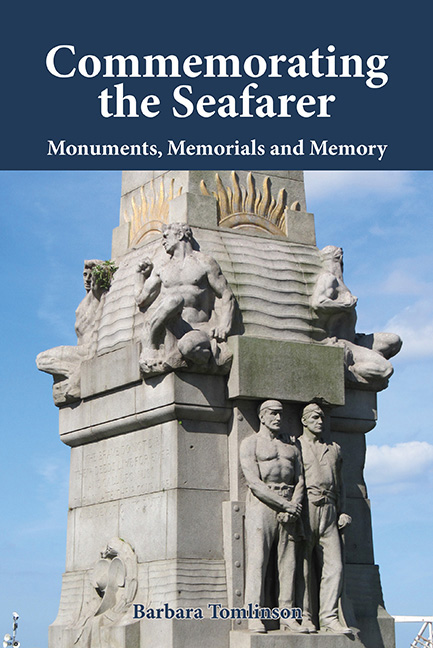Book contents
- Frontmatter
- Dedication
- Contents
- Illustrations
- Preface
- Acknowledgements
- Introduction
- 1 Shifting Loyalties: Naval Memorials, 1628–783
- 2 The Age of Heroes: Naval Memorials, 1783–815
- 3 Pax Britannica: Naval Memorials, 1815–914
- 4 Stormy Weather: Conflict and Sacrifice in the Twentieth Century
- 5 Commerce and Philanthropy: Mercantile Commemoration
- 6 Lost at Sea: Maritime Accidents
- 7 Maritime Explorers: Drake to Shackleton
- 8 Inshore: Fishermen, Lifesavers and Leisure
- Conclusion
- Bibliography
- Index
8 - Inshore: Fishermen, Lifesavers and Leisure
Published online by Cambridge University Press: 08 May 2021
- Frontmatter
- Dedication
- Contents
- Illustrations
- Preface
- Acknowledgements
- Introduction
- 1 Shifting Loyalties: Naval Memorials, 1628–783
- 2 The Age of Heroes: Naval Memorials, 1783–815
- 3 Pax Britannica: Naval Memorials, 1815–914
- 4 Stormy Weather: Conflict and Sacrifice in the Twentieth Century
- 5 Commerce and Philanthropy: Mercantile Commemoration
- 6 Lost at Sea: Maritime Accidents
- 7 Maritime Explorers: Drake to Shackleton
- 8 Inshore: Fishermen, Lifesavers and Leisure
- Conclusion
- Bibliography
- Index
Summary
Fishing boats, lifeboats and yachts are all small boats, or at least relatively so, from communities in which owners and crews are also subject to the hazards of the sea. This coastal zone, where work and leisure meet, has also been an area of cultural innovation, both artistic and social. Fishing is linked in some way to all of these stories.
Fishermen
Significant memorials to fishermen are harder to find than one might think. Inshore fishing was neither a lucrative occupation nor a full-time one. In eastern England, coastal dwellers took to fishing when other coastal trades declined, and combined it with pilotage, salvage and ship supply, all activities sometimes associated with sharp practice. Other coastal side-lines such as smuggling or plundering wrecks fell completely on the wrong side of the law. ‘Fisherman’ was not necessarily an occupation to be carved on the family gravestone. At the Old Parish Burial Ground at Wick in Caithness (a port that became a herring boom-town when the Dutch ceased to dominate this industry), there are many inscriptions commemorating men who gained their livelihood from fish processing and trading. Only one surviving stone states that it commemorates a fisherman, John Maskell of Greenwich, whose smack, Prince of Wales of London, was wrecked in Sinclairs Bay, in 1802: Greenwich smacks fished for cod in the North Sea.
Fishing villages were often situated some distance from the main parish church in remote coastal locations, inaccessible from the landward side but near to boats pulled up on the shore. Robin Hood's Bay for example was served by Old St Stephen's at Fylingthorpe one mile from the town, until a new church was built between Bay and Thorpe in 1870. Bay town itself had Methodist and Congregationalist chapels, a reflection of the strength of nonconformist religion in fishing communities. ‘Fisherman’ could be an occupation with status when individuals were commemorated in an evangelical context: ‘I will make you fishers of men’ (Matthew 4:19). A good example is the memorial placed in Paul church near Mousehole, Cornwall, to three local fishermen who died in 1851 during Captain Allen Gardiner's ill-fated mission to convert the inhabitants of Tierra del Fuego. At the former offshore fishing ports of Lowestoft and Hull, fishermen's headstones are found in the municipal cemeteries rather than the parish churches, reflecting a new industry moving into an established settlement.
- Type
- Chapter
- Information
- Commemorating the SeafarerMonuments, Memorials and Memory, pp. 203 - 230Publisher: Boydell & BrewerPrint publication year: 2015



